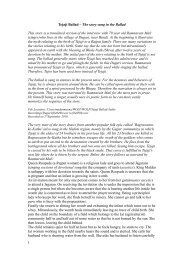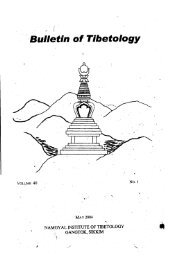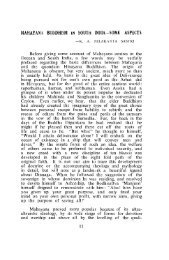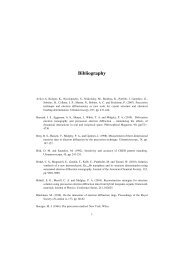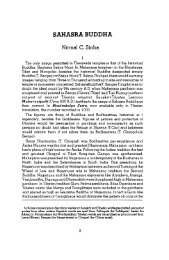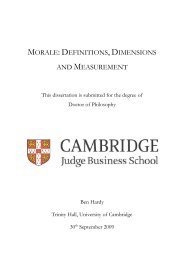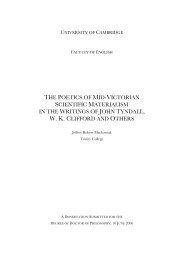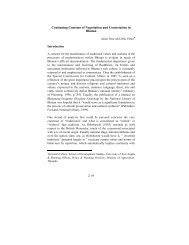The Crusades, the Genoese and the Latin East - DSpace at ...
The Crusades, the Genoese and the Latin East - DSpace at ...
The Crusades, the Genoese and the Latin East - DSpace at ...
You also want an ePaper? Increase the reach of your titles
YUMPU automatically turns print PDFs into web optimized ePapers that Google loves.
el<strong>at</strong>ionship between Genoa <strong>and</strong> Byblos will be discussed in Chapter Four. <strong>The</strong>se are also<br />
important to <strong>the</strong> underst<strong>and</strong>ing of <strong>the</strong> significance of <strong>the</strong> diplom<strong>at</strong>ic agreement with Aleppo.<br />
<strong>The</strong> vocabulary employed by <strong>the</strong> notaries is sometimes difficult to comprehend. For<br />
example, <strong>the</strong> terminology used in a contract between a ship builder <strong>and</strong> <strong>the</strong> owners of th<strong>at</strong> ship<br />
may contain many medieval terms th<strong>at</strong> usual dictionaries do not contain. Several linguistic tools<br />
are helpful in such cases, Nilo Calvini's Nuovo glossario medievale Ligure, despite being<br />
incomplete, is useful. On nautical terms, Augustin Jai, Nouveau glossaire nautique. Although<br />
d<strong>at</strong>ed, Pietro Rocca, Pesi e misure antiche di Genova e del Genoves<strong>at</strong>o, is a valuable guide for<br />
<strong>Genoese</strong> units of measure. An Italian - <strong>Genoese</strong> dictionary is sometimes helpful too. A general<br />
introduction to <strong>the</strong> contracts' style <strong>and</strong> <strong>the</strong> formulae employed may be found in Robert Lopez's<br />
<strong>and</strong> Irving Raymond's Medieval Trade in <strong>the</strong> Mediterranean World. Finally, in Eugene Byrne's<br />
book, <strong>Genoese</strong> Shipping in <strong>the</strong> Twelfth <strong>and</strong> Thirteenth Centuries, <strong>the</strong>re is a collection of<br />
documents with some more explan<strong>at</strong>ions about notaries' writing styles. <strong>The</strong> references to <strong>the</strong><br />
unpublished documents in this dissert<strong>at</strong>ion follow a common formula. First is <strong>the</strong> name of notary<br />
to whom <strong>the</strong> cartulary is <strong>at</strong>tributed, followed by <strong>the</strong> cartulary number as it is c<strong>at</strong>alogued in <strong>the</strong><br />
st<strong>at</strong>e archive in Genoa, <strong>the</strong>n <strong>the</strong> page number. Because <strong>the</strong> notaries used both sides of each page<br />
<strong>the</strong> letters R <strong>and</strong> V are used to differenti<strong>at</strong>e between <strong>the</strong>m. Finally, <strong>the</strong> number <strong>at</strong> <strong>the</strong> end was<br />
added here to signify <strong>the</strong> contract number on <strong>the</strong> page (usually up to six contracts per page).<br />
Methodology<br />
`Because<br />
<strong>the</strong> contracts will not sustain any meaningful st<strong>at</strong>istical analysis, we must go beyond <strong>the</strong><br />
numbers <strong>and</strong> look for some deeper p<strong>at</strong>terns <strong>and</strong> meanings. ' Steven Epstein wrote in his book on<br />
medieval Genoa. ' For several reasons, <strong>the</strong> analysis of <strong>the</strong> notarial documents is a challenge. <strong>The</strong><br />
gaps of inform<strong>at</strong>ion make <strong>the</strong> use of st<strong>at</strong>istical analysis problem<strong>at</strong>ic. <strong>The</strong>re is also a problem with<br />
o<strong>the</strong>r methods of analysis. For example, almost every book on Genoa's commercial activities in<br />
<strong>the</strong> Mediterranean contains long lists of merchants' first travelling destin<strong>at</strong>ions <strong>and</strong> <strong>the</strong> total<br />
amount of money taken for investments but no mention of subsequent destin<strong>at</strong>ions of equal<br />
importance. Such tables were used to evalu<strong>at</strong>e <strong>the</strong> commercial importance of each market.<br />
Copying from <strong>the</strong> studies of Erik Bach <strong>and</strong> David Abulafia, Geo Pistarino <strong>and</strong><br />
Steven Epstein<br />
have recently republished a table of first place of destin<strong>at</strong>ion to which <strong>Genoese</strong> merchants carried<br />
6 Robert S. Lopez <strong>and</strong> Irving W. Raymond, Medieval Trade in <strong>the</strong> Mediterranean World. Illustr<strong>at</strong>ive<br />
Documents Transl<strong>at</strong>ed with Introduction <strong>and</strong> Notes (London, 1955); Eugene H. Byrne, <strong>Genoese</strong> Shipping<br />
in <strong>the</strong> Twelfth <strong>and</strong> Thirteenth Centuries (Cambridge Mass., 1930)<br />
Steven A. Epstein, Genoa <strong>and</strong> <strong>the</strong> <strong>Genoese</strong>, 958-1528 (Chapel Hill, 1996), p. 61.<br />
13



